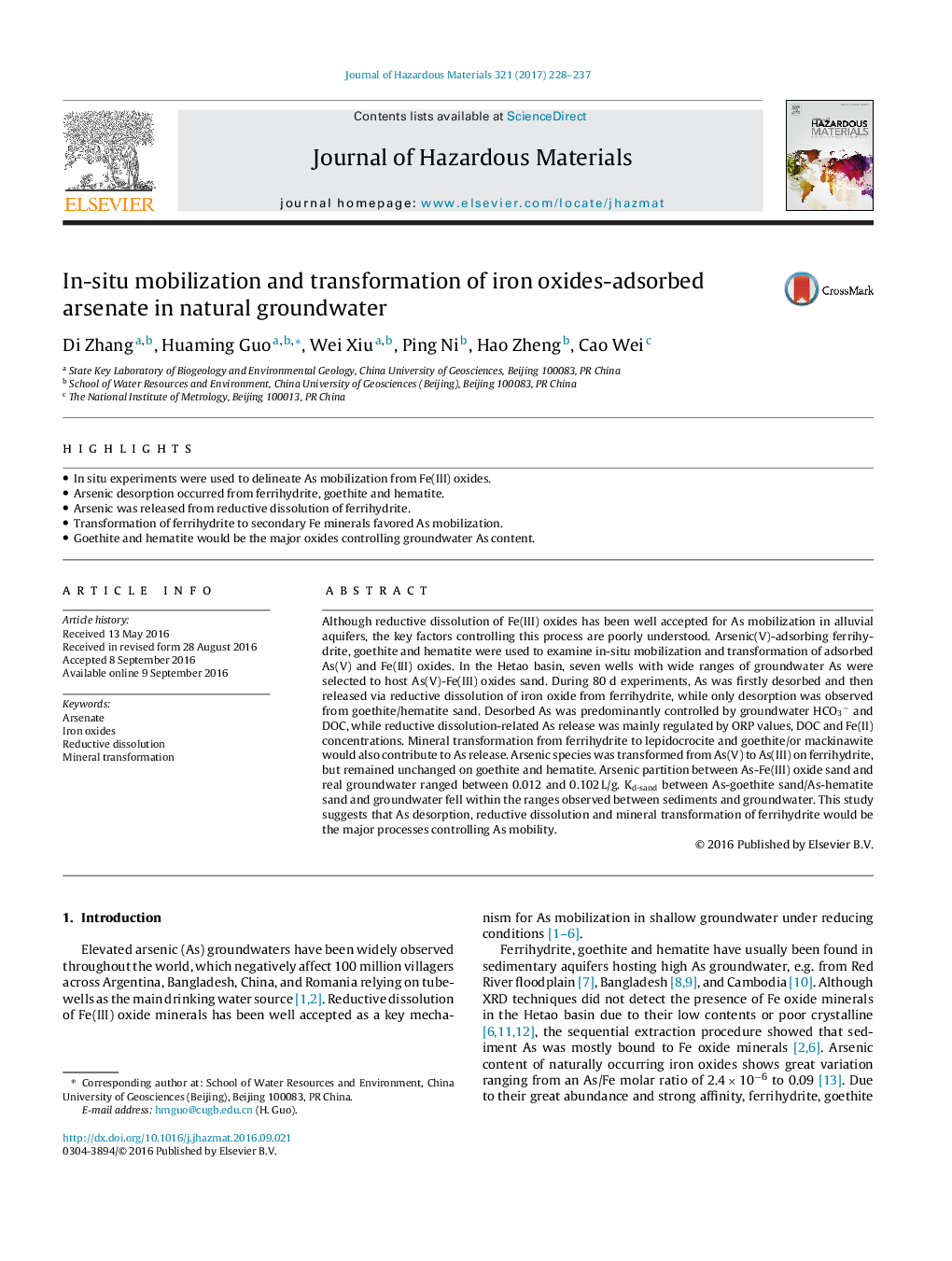| کد مقاله | کد نشریه | سال انتشار | مقاله انگلیسی | نسخه تمام متن |
|---|---|---|---|---|
| 4980047 | 1453039 | 2017 | 10 صفحه PDF | دانلود رایگان |
عنوان انگلیسی مقاله ISI
In-situ mobilization and transformation of iron oxides-adsorbed arsenate in natural groundwater
ترجمه فارسی عنوان
بسیج در محل و تحول اکسید آهن-آرسنات جذب شده در آبهای طبیعی
دانلود مقاله + سفارش ترجمه
دانلود مقاله ISI انگلیسی
رایگان برای ایرانیان
کلمات کلیدی
آرسنات اکسید آهن، انحلال تدریجی، تغییرات معدنی،
موضوعات مرتبط
مهندسی و علوم پایه
مهندسی شیمی
بهداشت و امنیت شیمی
چکیده انگلیسی
Although reductive dissolution of Fe(III) oxides has been well accepted for As mobilization in alluvial aquifers, the key factors controlling this process are poorly understood. Arsenic(V)-adsorbing ferrihydrite, goethite and hematite were used to examine in-situ mobilization and transformation of adsorbed As(V) and Fe(III) oxides. In the Hetao basin, seven wells with wide ranges of groundwater As were selected to host As(V)-Fe(III) oxides sand. During 80 d experiments, As was firstly desorbed and then released via reductive dissolution of iron oxide from ferrihydrite, while only desorption was observed from goethite/hematite sand. Desorbed As was predominantly controlled by groundwater HCO3â and DOC, while reductive dissolution-related As release was mainly regulated by ORP values, DOC and Fe(II) concentrations. Mineral transformation from ferrihydrite to lepidocrocite and goethite/or mackinawite would also contribute to As release. Arsenic species was transformed from As(V) to As(III) on ferrihydrite, but remained unchanged on goethite and hematite. Arsenic partition between As-Fe(III) oxide sand and real groundwater ranged between 0.012 and 0.102Â L/g. Kd-sand between As-goethite sand/As-hematite sand and groundwater fell within the ranges observed between sediments and groundwater. This study suggests that As desorption, reductive dissolution and mineral transformation of ferrihydrite would be the major processes controlling As mobility.
ناشر
Database: Elsevier - ScienceDirect (ساینس دایرکت)
Journal: Journal of Hazardous Materials - Volume 321, 5 January 2017, Pages 228-237
Journal: Journal of Hazardous Materials - Volume 321, 5 January 2017, Pages 228-237
نویسندگان
Di Zhang, Huaming Guo, Wei Xiu, Ping Ni, Hao Zheng, Cao Wei,
